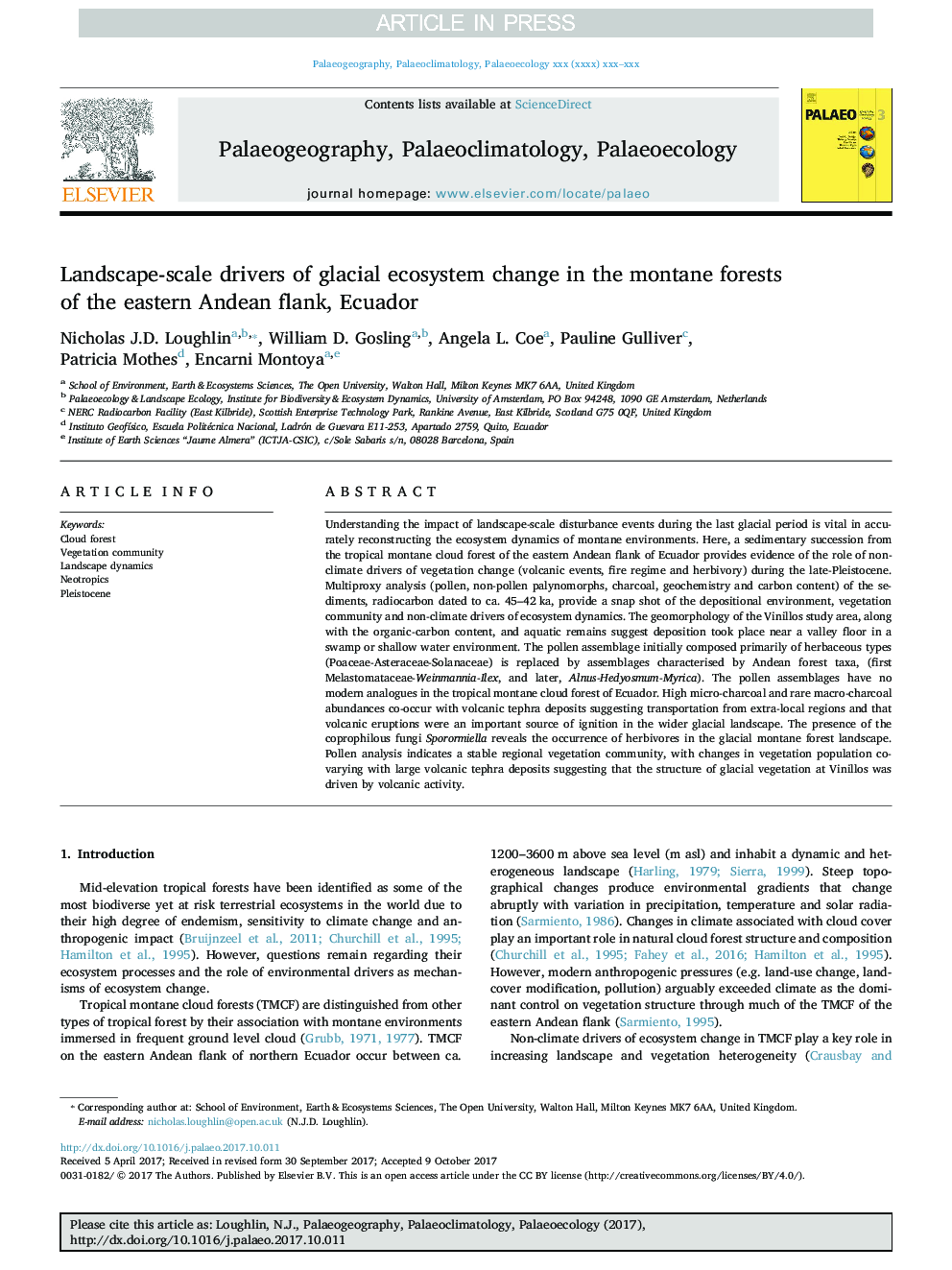| کد مقاله | کد نشریه | سال انتشار | مقاله انگلیسی | نسخه تمام متن |
|---|---|---|---|---|
| 8868512 | 1622103 | 2018 | 11 صفحه PDF | دانلود رایگان |
عنوان انگلیسی مقاله ISI
Landscape-scale drivers of glacial ecosystem change in the montane forests of the eastern Andean flank, Ecuador
ترجمه فارسی عنوان
رانندگان چشم انداز تغییرات اکوسیستم یخبندان در جنگل های مونته ایون افریقای جنوبی، اکوادور
دانلود مقاله + سفارش ترجمه
دانلود مقاله ISI انگلیسی
رایگان برای ایرانیان
کلمات کلیدی
موضوعات مرتبط
مهندسی و علوم پایه
علوم زمین و سیارات
فرآیندهای سطح زمین
چکیده انگلیسی
Understanding the impact of landscape-scale disturbance events during the last glacial period is vital in accurately reconstructing the ecosystem dynamics of montane environments. Here, a sedimentary succession from the tropical montane cloud forest of the eastern Andean flank of Ecuador provides evidence of the role of non-climate drivers of vegetation change (volcanic events, fire regime and herbivory) during the late-Pleistocene. Multiproxy analysis (pollen, non-pollen palynomorphs, charcoal, geochemistry and carbon content) of the sediments, radiocarbon dated to ca. 45-42Â ka, provide a snap shot of the depositional environment, vegetation community and non-climate drivers of ecosystem dynamics. The geomorphology of the Vinillos study area, along with the organicâcarbon content, and aquatic remains suggest deposition took place near a valley floor in a swamp or shallow water environment. The pollen assemblage initially composed primarily of herbaceous types (Poaceae-Asteraceae-Solanaceae) is replaced by assemblages characterised by Andean forest taxa, (first Melastomataceae-Weinmannia-Ilex, and later, Alnus-Hedyosmum-Myrica). The pollen assemblages have no modern analogues in the tropical montane cloud forest of Ecuador. High micro-charcoal and rare macro-charcoal abundances co-occur with volcanic tephra deposits suggesting transportation from extra-local regions and that volcanic eruptions were an important source of ignition in the wider glacial landscape. The presence of the coprophilous fungi Sporormiella reveals the occurrence of herbivores in the glacial montane forest landscape. Pollen analysis indicates a stable regional vegetation community, with changes in vegetation population co-varying with large volcanic tephra deposits suggesting that the structure of glacial vegetation at Vinillos was driven by volcanic activity.
ناشر
Database: Elsevier - ScienceDirect (ساینس دایرکت)
Journal: Palaeogeography, Palaeoclimatology, Palaeoecology - Volume 489, 1 January 2018, Pages 198-208
Journal: Palaeogeography, Palaeoclimatology, Palaeoecology - Volume 489, 1 January 2018, Pages 198-208
نویسندگان
Nicholas J.D. Loughlin, William D. Gosling, Angela L. Coe, Pauline Gulliver, Patricia Mothes, Encarni Montoya,
